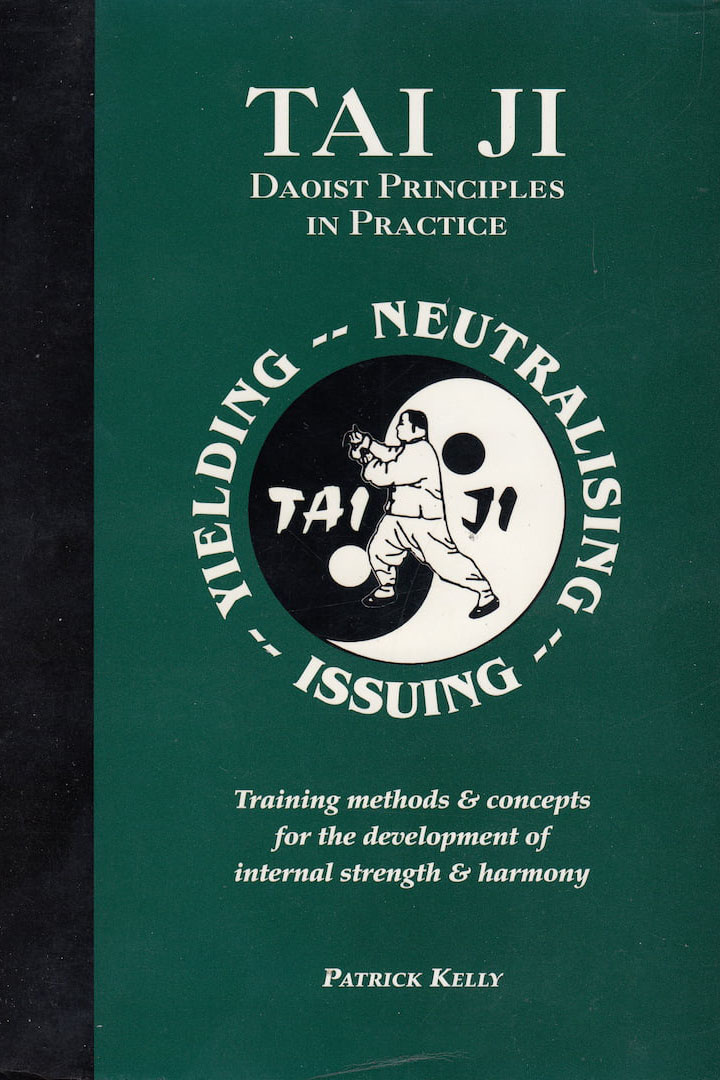
Daoist Principles in Practice

Taiji - Daoist Principles in Practice
contains training methods, teaching principles and advanced concepts of application.
Taiji is explained as a balanced system for the development of efficient movement, internal strength and spiritual harmony.
From the Book:
Waves of Movement. All fluids move in waves. Energy moves through fluids either as a transfer of mass with a stored momentum, or as a wave of elastic displacement that leaves the medium undisturbed once it has passed. Stored momentum gives a more external force and elastic displacement a more internal one. Different types of waves appear when we move. Forward and backward waves are generated from the hips moving horizontally slightly ahead of the rest of the body. Moving the body in horizontal curves produces waves in all horizontal directions. Twisting waves are produced by turning the hips slightly ahead of the rest of the body. Twisting waves wind along lines of elastic connection between the points of application of force and the ground. Vertical waves appear when the hips lift and sink before the upper-body. Adding this vertical dimension produces waves of compression and expansion up and down the body, which power the lifting and lowering of the arms. Smooth continuous waves that ripple and interact throughout the body in a complex and natural manner are a final result of the simultaneous interaction of these three types of waves.
From the Book: continued
Learning to produce and regulate these waves requires an intelligently designed series of steps leading from the simple to the complex. Any section of the body can be trained to move ahead of the rest of the body, creating a simple two-part wave. Later, several of these two-part waves can be assembled to create more complex wave patterns. Two part twisting waves are formed when the pelvis begins to rotate and the upper-body and arms follow. Two-part vertical waves are generated by sinking the lower half of the body before the upper half producing waves of compression and expansion centred in the pelvis. Somewhat controversial, but supported by experience and logic, is the advancing and retreating of the lower-body before the upper when two-part forward and back waves appear. Basic three part waves appear when the lower-body leads the upper-body which then leads the arm - where the arm is taken to extend from the fingertips to the lowest point of the shoulder-blade.
From the Book: continued
One, two, three or more part waves can also appear in any section of the body. A three part arm wave involving moving first the shoulder then the elbow and finally the wrist, is used to transmit waves of power from the upper-body to the hand. From this it is a simple step conceptually to produce a sequence of movement from the sole of the foot to the finger tips, with a slight delay at every joint as the muscles, tendons and ligaments stretch. The arms and legs can also twist in unison with the waist so that the force spirals as it travels. The sense of this twisting can be given when you visualise a hand moving over the surface of a ball. Then the palm and forearm rotate as they move, to maintain contact with the surface of the ball.

